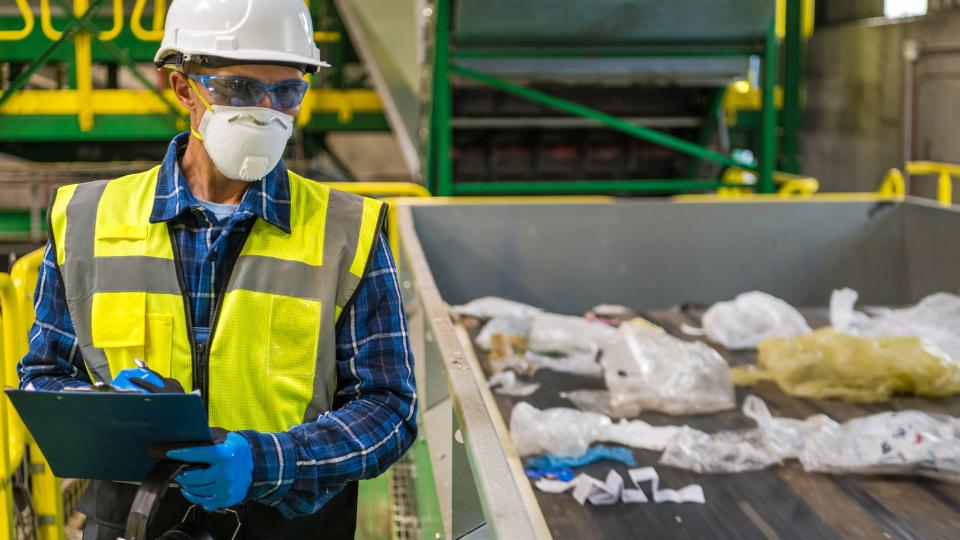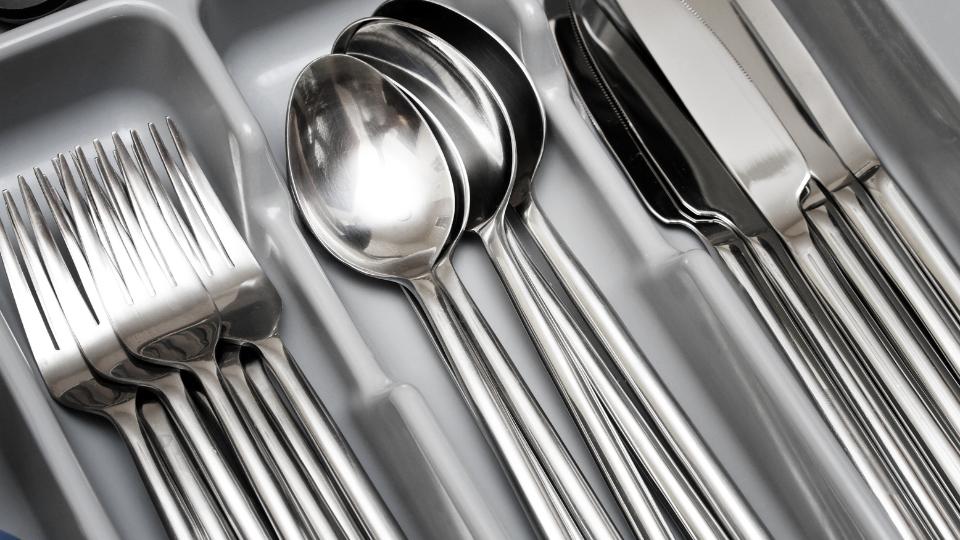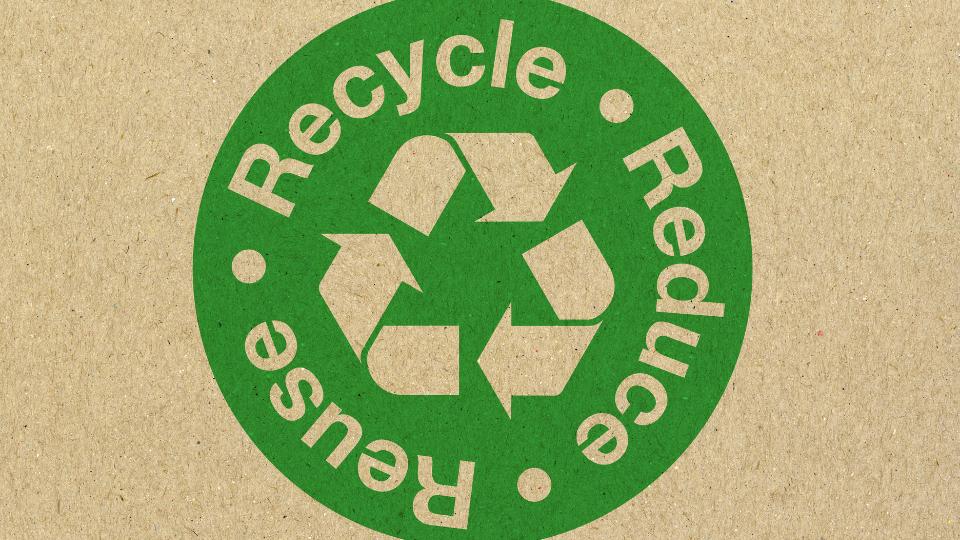
What are the 5 Rs of Waste Management?
So what are the 5 Rs of waste management? These steps are implemented to help businesses to manage the amount of rubbish that they produce and recycle as much as they can to try and send zero waste to landfill.
The 5 Rs of waste management are as follows: Refuse, Reduce, Reuse, Repurpose and Recycle.
In practice, the 5 Rs will break down the waste lifecycle into stages so that businesses can identify actions they can take to reduce the amount of waste and pollution they produce.
The aim is to create a clean environment in a more simplistic way that can be easily managed by business owners and their staff.
Below we have outlined each of the 5 Rs of waste management stages with examples.
The 5 Rs of Waste Management Stages:
Stage One: Refuse
This stage can be challenging at first as you will have to start by identifying opportunities where you can remove waste from your business.
This could come in the form of refusing single-use plastics in favour of biodegradable or reusable items such as paper or metal straws.
The procurement or supplier contact team would also be able to assess current examples of unnecessary waste in packaging that could be cut down on or removed.
A lot of commercial items can now be delivered with appropriate reusable containers to prevent the need for bubble wrap, polystyrene and plastics.
Even though it can seem daunting to take the first step it will save your business costs in the long run.
If you can implement this important stage of the 5 R process the rest will be a lot easier. After all, why give yourself the extra work of managing multiple material types if you could remove them from the equation?
Stage Two: Reduce
Now that you have eliminated unnecessary materials from your business you can now audit your site to find opportunities to cut down on other waste types.
Each business will have it’s own unique circumstances, but many will share similar scenarios.
For offices – moving to a paperless environment can be a real game changer.
Not only does this provide the added benefit of data security for a site but this will also drastically reduce the amount of paper and plastic waste being produced on a site.
You may also want to look into reaffirming your business’s stance on conservation and environmental welfare.
By voicing your stance on managing resources your staff will be more engaged in following eco-friendly business practices such as bringing their own cups to work instead of using disposables.
If you care about a circular economy, your staff will be more likely to get involved.
Strep Three: Reuse
This stage involves exactly what is says on the tin. You will want to strive to make use of an item more than once whenever possible.
Of course, there are cases when this is not possible or optimal due to contamination. There are, however, many opportunities to reuse items if the correct product has been selected at purchase.
We advise making use of items that can be cleaned for reuse when applicable. Examples would include cutlery as opposed to plastic or wooden utensils.
Reusing is a massive chance to capitalise on cutting down items being sent to landfill needlesly.
It is important to still acknowledge that when reusing items that they are still able to properly perform.
Whether the items are medical equipment that requires sterilisation and UV treatment, or heavy goods loading straps that may be beggining to wear down, ensure that they can perform their intended purpose effectively and safely first and foremost.

Step Four: Repurpose
This stage can require a little more creativity and brainstorming than the others. It will be easier to come up with ideas for repurposing items in certain sectors.
It’s important to note that repurposing items need not only be conducted in house. There may be other businesses in your area that could make use of the items once you have finished using them.
Clothing manufacturers are a good example. Many of the biggest names in retail practice repurposing their own items to make new clothing.
Urban Outfitters is a prime example. The company has over 200 stores worldwide and NET 2.1 billion dollars in 2021 in large part due to their minimal wastage policy.
Many developers and scrap metal merchants have resold materials to be used in making furniture and home decorations due to the new wave of rustic aesthetics that has dominated interior design in recent years.
IT equipment can be sent to technology shops that specialise in removing usable parts or even give the equipment a makeover to be resold.
It can take a few cups of coffee and some brain power. But if we put our thinking caps on we can find new opportunities to repurpose materials in unexpected places.
Step Five: Recycle
So once you have done all you can to implement new ideas in stages one through 4 of the 5 Rs of waste management the only thing left is to recycle the remaining material.
After you have sorted and removed materials before this point this first stage will be a lot easier.
When recycling, there are a lot of approaches you can take to better manage the process on-site with minimal impact to your business’s in-house operations.
Try placing bins for various waste types at different parts of your site, ensure they are all colour-coded and clearly labelled and are in logical locations for the waste types (food waste in eating areas, plastic recycling near vending machines etc…).
By doing this you will reduce the risk of cross-contamination. When staff are busy and their minds are preoccupied they may place items into the wrong bin unintentionally.
Our guide to the 5 Rs

How can I use the 5 Rs of waste management in my business?
In today’s world, businesses of all sizes have a responsibility to reduce their environmental impact and promote sustainable practices.
By implementing the 5 Rs of waste management: Refuse, Reduce, Reuse, Repurpose, and Recycle you will save your business money and help contribute to your local environment.
Refuse The first step in implementing the 5 Rs is to refuse unnecessary items. Identify items that your business can do without and stop buying them.
For example, if your business doesn’t require single-use plastics or disposable products, refuse to purchase them. By refusing to purchase unnecessary items, you can help reduce the amount of waste your business generates.
Reduce The next step is to reduce the amount of waste your business generates. There are various ways to achieve this, including minimising packaging, using energy-efficient appliances, and implementing sustainable practices such as paperless billing.
By reducing your business’s environmental footprint, you can save money and help create a more sustainable future.
Reuse Another way to reduce waste is by reusing items whenever possible. For example, you can reuse boxes and other packaging materials for shipping, or use scrap paper for notes and printing.
By reusing items, you can minimise waste and save money on purchasing new items.
Repurpose If you have items that are no longer useful in their original form, consider ways to repurpose them.
For example, old furniture can be refurbished, and used office supplies can be donated to schools or non-profit organisations. By repurposing items, you can extend their lifespan and prevent them from ending up in landfills.
Recycle Finally, make sure to recycle all materials that can be recycled. This includes paper, plastics, and metals.
Provide recycling bins throughout your business and educate your employees on the proper way to recycle.
By implementing a recycling program, you can help minimise waste and promote sustainability.
In conclusion, implementing the 5 Rs of waste management is an effective way to reduce waste and promote sustainability in your business.
By refusing unnecessary items, reducing waste, reusing items, repurposing items, and recycling materials, your business can reduce its environmental impact, save money, and create a more sustainable future.
Take the first step today by identifying ways your business can implement these principles and start making a difference.
Waste and recycling statistics
- Recycling rates: The UK’s recycling rate was 45.5% in 2019, which is up from 39.5% in 2010. The UK government has set a target of reaching a 65% recycling rate by 2035.
- Materials recycled: The most commonly recycled materials in the UK include paper and cardboard, glass, plastics, and metals. However, there are many other materials that can be recycled as well, including textiles and electronics.
- Household recycling: In 2019, the household recycling rate was 44.9%, which means that almost half of household waste was recycled. However, this varies across different regions in the UK.
- Commercial and industrial recycling: In 2019, the commercial and industrial recycling rate was 50.7%, which means that more than half of waste generated by businesses and industries was recycled.
- Recycling infrastructure: The UK has a strong recycling infrastructure, with many recycling centres and facilities throughout the country. However, there is still a need for continued investment in recycling infrastructure to improve efficiency and increase recycling rates.
- Landfill: The amount of waste sent to landfill has decreased significantly over the years, with only 6.1% of waste being sent to landfill in 2019.
- Overall, the UK has made significant progress in recycling over the years, but there is still more work to be done to reach the government’s target of a 65% recycling rate by 2035.








